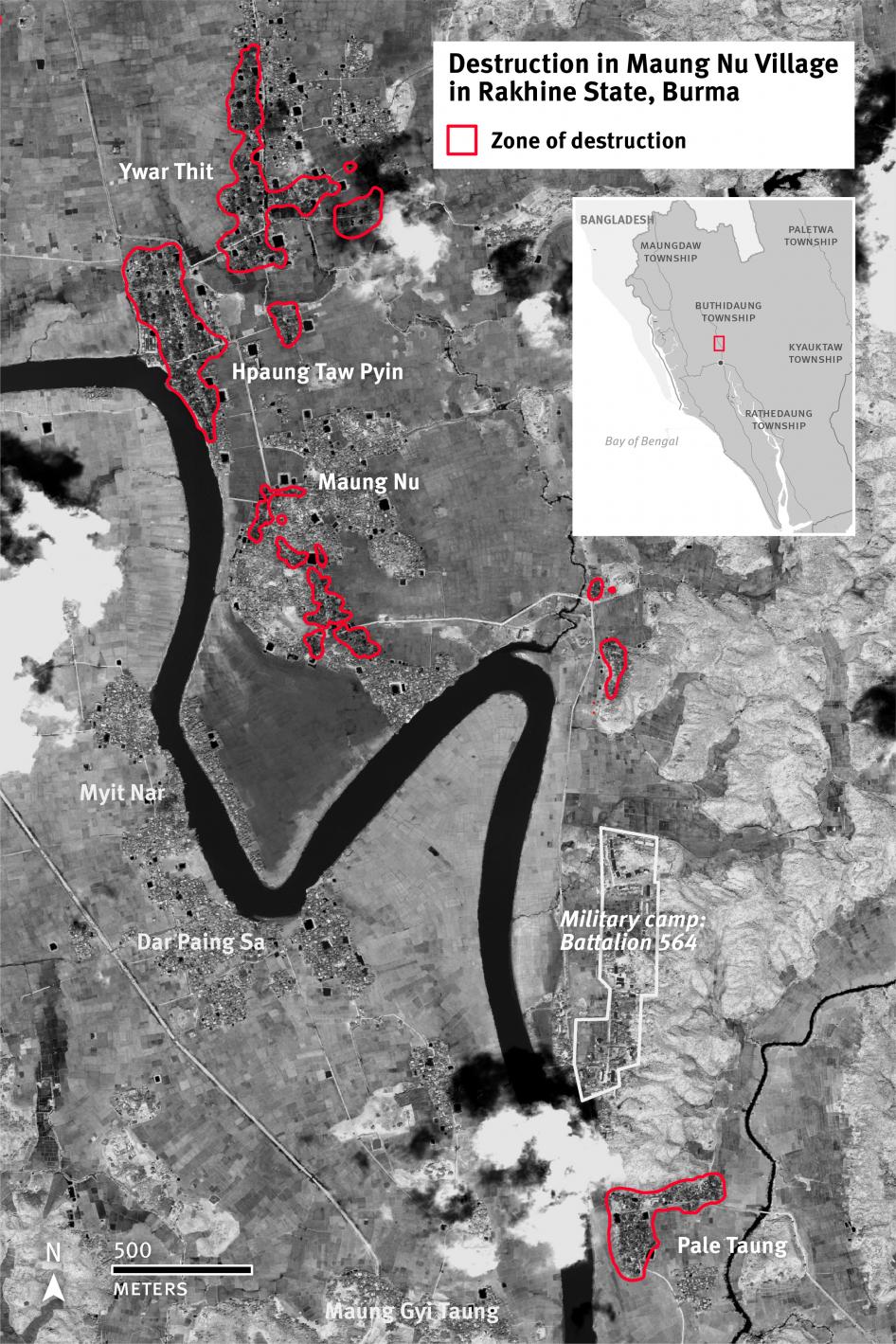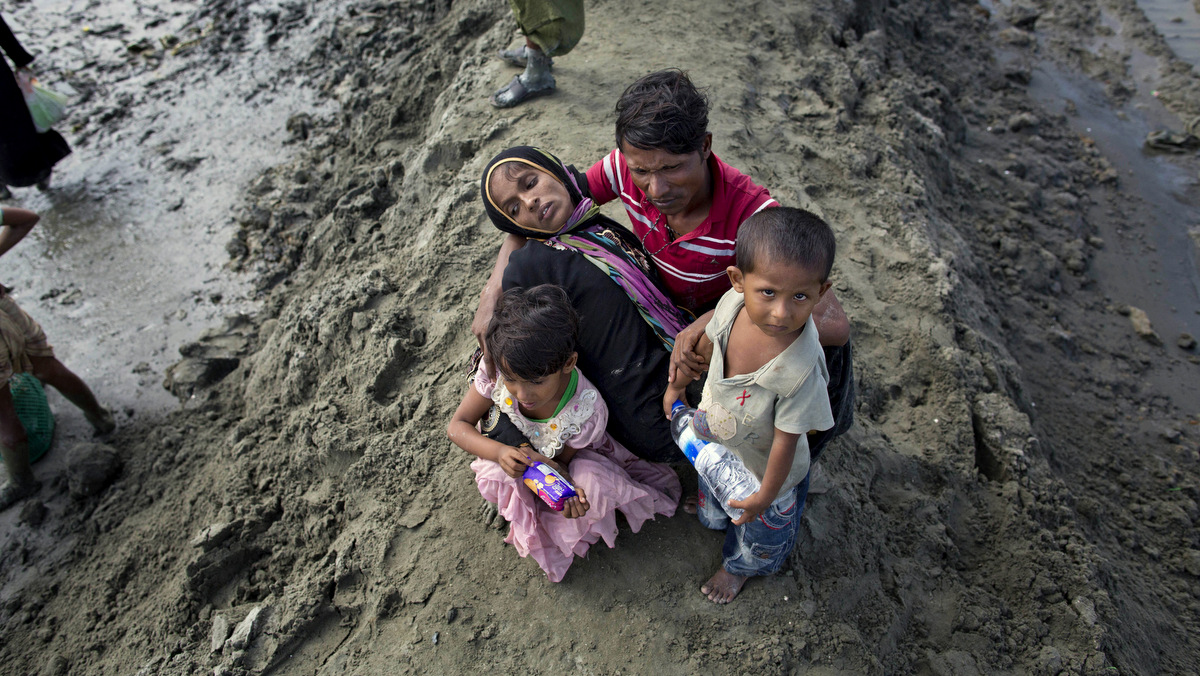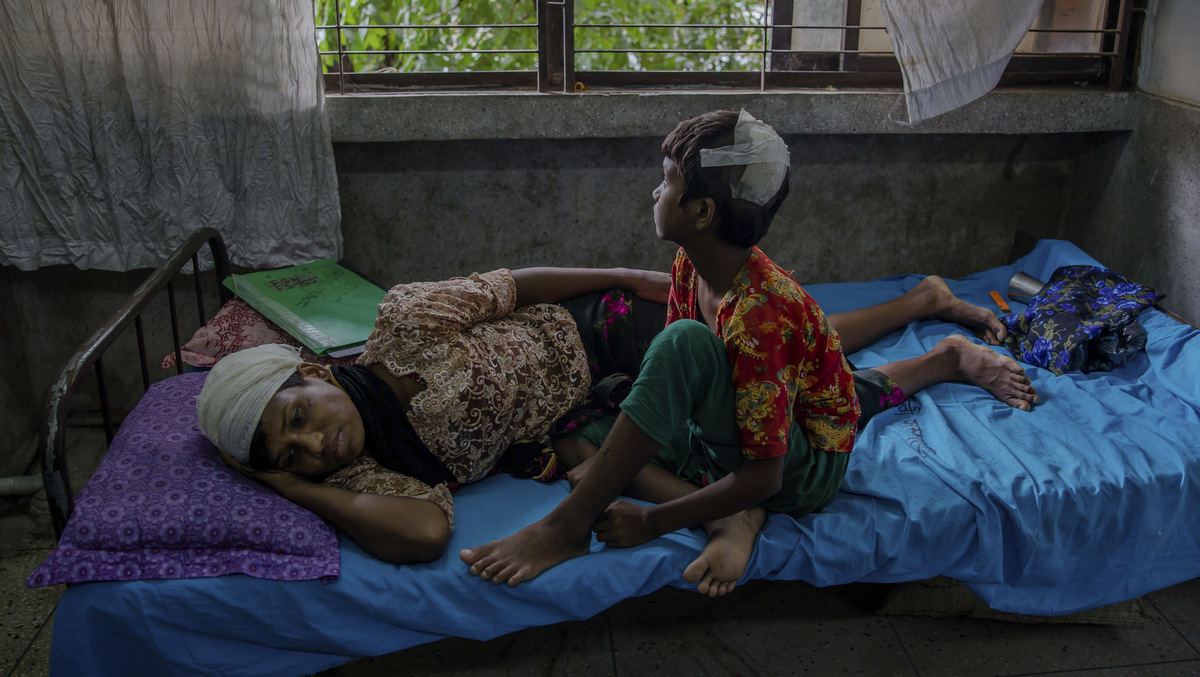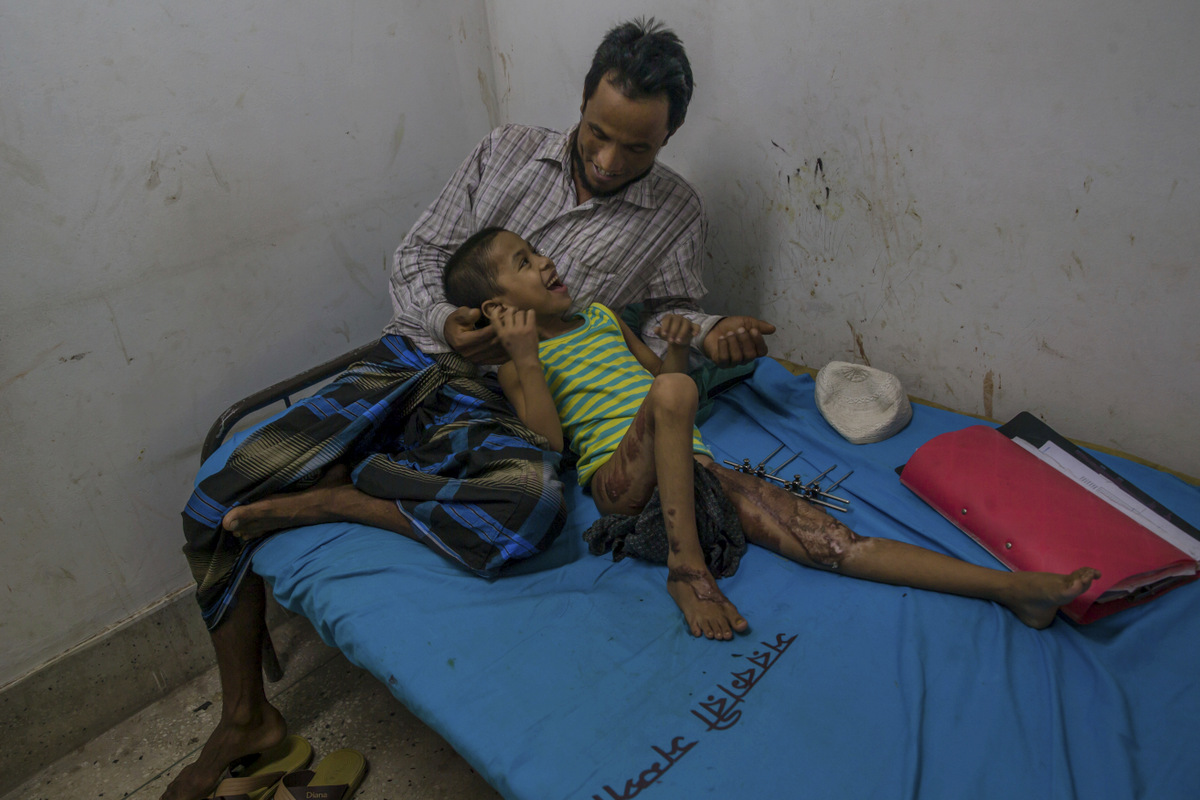[ad_1]
The Burmese military summarily executed several dozen Rohingya Muslims in Maung Nu village in Burma’s Rakhine State on August 27, 2017, Human Rights Watch said today. Witnesses said that Burmese soldiers had beaten, sexually assaulted, stabbed, and shot villagers who had gathered for safety in a residential compound, two days after Rohingya militants attacked a local security outpost and military base.
Human Rights Watch has not been able to verify estimates of the number of villagers killed. Satellite imagery analyzed by Human Rights Watch shows the near total destruction of the villages of Maung Nu (known locally as Monu Para) and nearby Hpaung Taw Pyin (known locally as Pondu Para). The damage signatures are consistent with fire.
“All the horrors of the Burmese army’s crimes against humanity against the Rohingya are evident in the mass killings in Maung Nu village,” said Phil Robertson, deputy Asia director at Human Rights Watch. “These atrocities demand more than words from concerned governments; they need concrete responses with consequences.”

Satellite imagery showing the destruction in Maung Nu Village, Rakhine State, since August 2017. © 2017 Human Rights Watch
On September 28, the United Nations Security Council met to discuss Burma publicly for the first time in eight years, but took no action. Human Rights Watch repeated its call for the council and concerned countries to adopt an arms embargo and individual sanctions, including travel bans and asset freezes, against Burmese military commanders implicated in abuses.
Human Rights Watch spoke with 14 survivors and witnesses from Maung Nu and surrounding villages in the Chin Tha Mar village tract of Buthidaung Township. The witnesses, now refugees in Bangladesh, said that after the militant attacks they feared Burmese military retaliation. Several hundred gathered in a large residential compound in Maung Nu. Several Burmese soldiers entered the compound while others surrounded it. They took several dozen Rohingya men and boys into the courtyard and then shot or stabbed them to death. Others were killed as they tried to flee. The soldiers then loaded the bodies – some witnesses said a hundred or more – into military trucks and took them away.
Attacks by Militants

A newly arrived Rohingya Muslim Mohamed Rafiq, center, comforts his wife Noora Khatum and his children as they reach Teknaf, Bangladesh, Friday, Sept. 29, 2017. He trekked to Bangladesh as part of an exodus of a half million people from Myanmar, the largest refugee crisis to hit Asia in decades. But after climbing out of a boat on a creek on Friday, Rafiq could go no further. He collapsed onto a muddy spit of land cradling his wife in his lap, a limp figure so exhausted and so hungry she could no longer walk or even raise her wrists. (AP/Gemunu Amarasinghe)
Over 500,000 Rohingya Muslims have fled to Bangladesh to escape mass atrocities by Burmese security forces. The crackdown followed after militants from the Arakan Rohingya Salvation Army (ARSA), on August 25, attacked a military camp and about 30 security force outposts throughout northern Rakhine State. The government reported that the militants killed 11 security force personnel during the attacks.
The militants attacked the headquarters of the Western Command’s Light Infantry Battalion 552 in Taung Bazar, about 10 kilometers north of Maung Nu. The government said that at least 10 militants were killed.
One of the post attacks occurred early that morning close to the market in Hpaung Taw Pyin, just north of Maung Nu, when ARSA militants attacked a checkpoint manned by the Border Guard Police (BGP). Residents living near the market told Human Rights Watch that they were sleeping at home and heard heavy gunfire coming from the area near the BGP checkpoint. They said gunfire continued until about 6 a.m.
Related | Oil, Gas, Geopolitics Guide US Hand In Playing The Rohingya Crisis
Mohammad Usman, a 15-year-old Rohingya, said he was awakened by the heavy gunfire. When their homes caught fire, he and other villagers fled, but it was too dark to see who was shooting. “We ran out of our house to other villages,” he said. “Bullets were falling like rain and people were falling down around me. Suddenly, I felt something hit my arm and then my back. I lost consciousness and I woke up in someone else’s home.” Mohammad said he had been shot in the arm and hit by shrapnel in the back.
The Burmese government reported that over 100 militants took part in that attack using “swords, firearms and bombs,” and that two police officers and two militants were killed. There are numerous reports of serious abuses committed by ARSA militants, though Human Rights Watch has not been able to independently verify those accounts, in part because of the lack of access to northern Rakhine State.
Human Rights Watch could not verify the government’s figures, but witnesses said that after the fighting ceased soldiers from the army camp requisitioned a large private boat onto which they loaded an unknown number of bodies from near the village marketplace. The boat owner, Mohammad Zubair, identified the soldier who seized the boat as Staff Sergeant Baju from an army camp just south of the market occupied by Light Infantry Battalion 564. Zubair said he watched the soldiers load the bodies, some of which he recognized as young Rohingya men from the area.
Killing of Villagers by Soldiers
Witnesses said about two dozen Burmese soldiers arrived at the crowded property late in the morning on August 27. One soldier, identified by many witnesses as Staff Sergeant Baju, led several soldiers into the courtyard and began calling to the people hiding in the house in the Rohingya language. Villagers said Baju had lived at the nearby military base for 15 years and spoke Rohingya. Several overheard Baju trying to convince the men and boys inside the house that they would not be killed if they left the buildings.
Related | Myanmar Armed Forces Burn Villages, Fire On Fleeing Civilians
Villagers inside the courtyard as well as some who managed to escape and were observing from hillsides overlooking the compound, said that soldiers brought Rohingya men and boys into the courtyard. The soldiers bound their hands behind their back. Then they beat them, stabbed and slashed them with long knives, and shot them.
Abdul Jabar, 60, said the soldiers made the men kneel down as they struck them with the butts of their rifles and kicked them repeatedly before killing them: “[T]hey killed people from the back with machetes and they also fired on them with their guns.”
Mohammad Ayas, 29, said that he managed to hide in the rafters of the house and saw soldiers kill numerous people: “They are slaughtering them just like they are clearing the jungle with their thin, sharp, and long knives.”
Muhamedul Hassan, 18, said that a dozen soldiers, led by Staff Sergeant Baju, took him and two male relatives, Mohammad Zobair and Foyas, from their house to Zahid Hossain’s nearby courtyard. Hassan said that when they got there, there were hundreds of men and boys tied up. He said:
Four soldiers took [me and my relatives] to the corner of the courtyard and shot us each twice in the back. I lost consciousness. When I woke up, I saw many men still tied and [the soldiers] were still killing people. Many were stabbed to death. When I tried to flee I was shot in the chest but was able to escape.
Muhamedul showed Human Rights Watch his bullet wounds. He said that in addition to the two executed beside him, nearly 30 more male relatives were killed that day.
Witnesses also described seeing children executed. Khotiaz, 28, recounted the killing of her nephew: “When Baju entered the room, there was my nephew, Mohammod Tofail. He was 10 years old. He was a student of class two. First Baju shot him in the head, his skull shattered into four pieces. Then he fell down. I saw there were brain and blood on the floor.”
Mustafa, 22, said: “There was a pit with [the bodies of] 10 to 15 children, all under 12 years old. They were all young children hacked to death. I recognized four of the bodies: Hakim Ali, 9; Naim, 8; one child from Pondu Para, who was about 10; and Chau Mong, who was 7.”
Witnesses said that after the killings, the soldiers gathered the bodies on green tarps and loaded them onto pushcarts, then brought the bodies to military vehicles. The removal of bodies took hours, several witnesses said.
“I saw outside that there were piles of dead bodies.” Mustafa said. “I could see the soldiers using carts [to move the bodies] and I recognized one of the carts was mine.” Mustafa said he heard the sounds of the trucks and vehicles for four hours.
Sexual Assault

Rohingya woman Dildar Begum and her daughter Noor Kalima, who crossed over to Bangladesh recover at Sadar Hospital in Cox’s Bazar, Bangladesh, Wednesday, Sept. 27, 2017. Begum said she and her daughter Noor Kalima, got stabbed by Myanmar soldiers and her husband was killed. (AP Photo/Dar Yasin)
Human Rights Watch received credible reports that soldiers subjected women to invasive body searches, non-consensual touching, and sexual assault at the compound in Maung Nu.
Khotiaz, 28, said that soldiers targeted women hiding on the property, including the large building where she hid: “They entered the room and stripped some of the women naked. They snatched everything I had. They touched [me] everywhere and tried to take off my clothes.”
Related | “The Military Plan To Wipe Out All Muslims In Myanmar’
A 30-year-old woman said the soldiers were looking for money and other valuables. “One soldier put his hand inside my chest, and he took my cellphone and money, also,” she said. “Then he opened my thami [lower part of a woman’s dress]. And there was some gold and money [he found], which he took. Then he touched me everywhere.”
Witnesses said they fled the village when the military left the area. Many spent weeks trying to reach the Bangladesh border, where they crossed with thousands of other Rohingya.
In March, the UN Human Rights Council agreed to send a fact-finding mission of international experts to investigate the abuses, but the Burmese government said it would not allow the investigators to enter.
“Burmese military commanders cannot use the excuse of militant attacks to avoid justice and punishment,” Robertson said. “The UN fact-finding mission needs to investigate these atrocities, including commanders who ordered the attack or failed to punish those involved.”
Top photo | Alishaan, a Rohingya Muslim man, walks towards a hospital carrying his sick mother Aishya Khatoon at Taiy Khali refugee camp, Bangladesh, Thursday, Sept. 21, 2017. More than 400,000 Rohingya Muslims have fled to Bangladesh since Aug. 25. (AP/Dar Yasin)
The post Burma: Military Massacres Dozens In Rohingya Village appeared first on MintPress News.
[ad_2]
